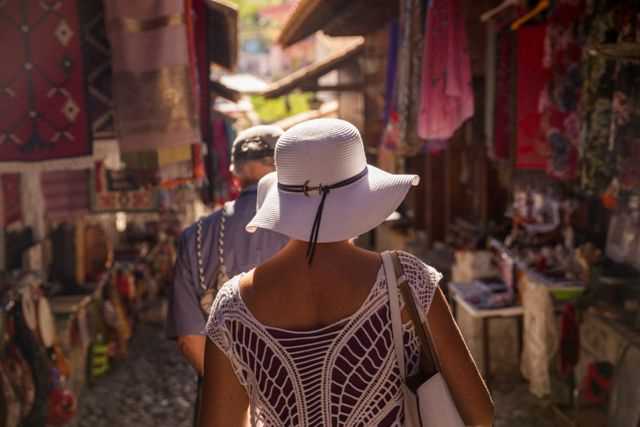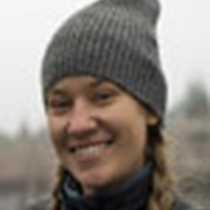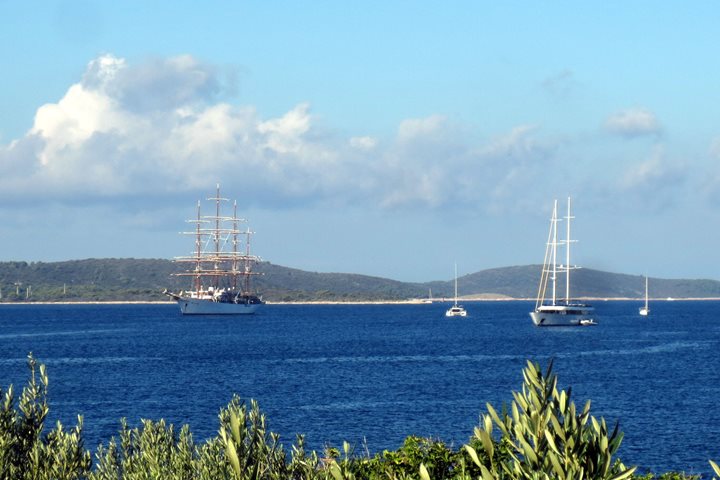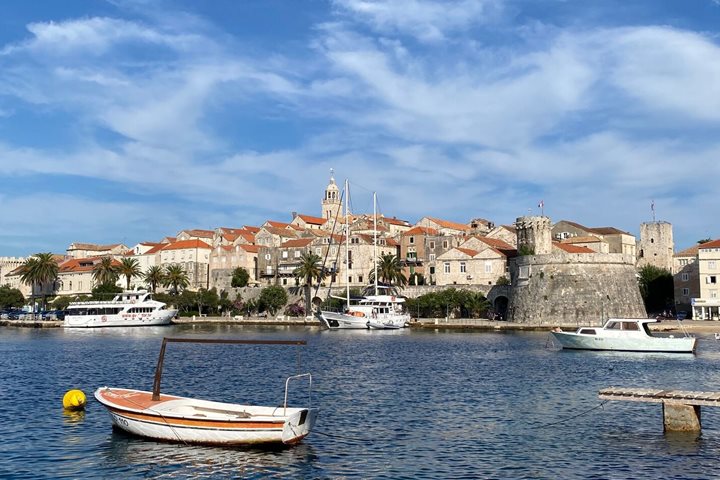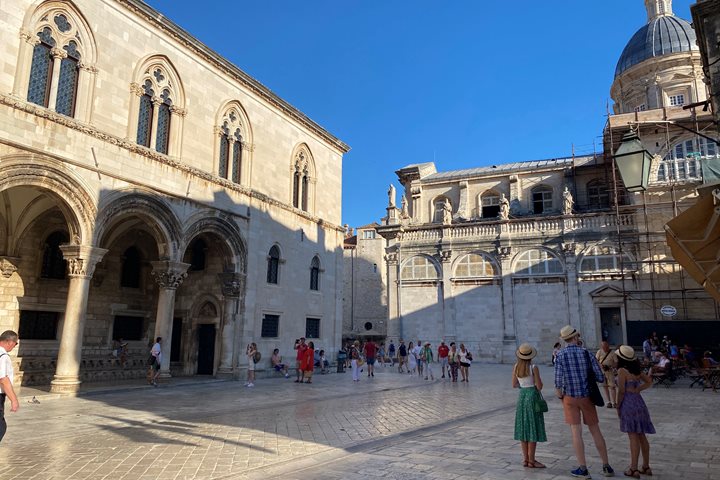Today when we woke up, we felt a world apart from the stunning mountains of Montenegro. We were docked in the busy port of Durres, Albania but luckily this was just the jumping off point for further exploration of the interior of the mysterious country. Although Durres has become quite a modern city, it has been used as the main port of this region since the 7th century, and evidence can be seen in the ruins that are surrounded by bigger buildings. We hopped on the buses and listened to our local guides cover the many stages of Albanian history from the Neolithic era ending with the Communist dictatorship of Enver Hoxha to the present day. We drove for about 75 minutes through the country side, occasionally having to yield to a passing car driving head-on in our lane. Our expert bus drivers kept us safe, and we arrived in the mostly medieval town and former capital of Albania, Kruje, to begin the day tours.
Our first stop was the historical museum dedicated to Albania’s national hero Skanderbeg, who rebelled against the Ottomans and kept Albania free from the Turks for almost 40 years. Evidence of Skanderbeg’s popularity can be seen everywhere, with streets, stadiums, and even mountains bearing his name. We saw fascinating frescos of Skanderbeg defeating Ottoman forces painted across an entire wall. From the balcony on the second floor was a fabulous view all the way to the Adriatic Sea down below. Our next stop was the Ethnographic Museum which was an 18th century home of a rich merchant set up as they would have had it back then. Down below, our guide showed us how the tannery, blacksmith, and olive press worked. Upstairs we saw how the bedrooms were arranged (I was surprised to see that they had separate rooms for the men and the women!) and even the clothes that they wore.
After the two museums, we enjoyed a fresh and delicious lunch at a restaurant in the same compound. We loaded up our plates with color vegetables and savory pastries and were nearly full when the waiters brought the steaming clay pots of lamb falling off the bone and potatoes. It wasn’t over yet. We cleansed our palettes with sour cherries, and after we were treated to a rice dessert which contained a bit of meat and was perfectly dusted with cinnamon on top. It was much tastier than it sounds! At the end of our meal, elegant dancers came down the stairs accompanied by a traditional band and played a few songs for us. Some of us even joined in and danced with the group until the rhythm became too quick to keep up with. After the show, we meandered down to the medieval bazaar to shop for jewelry, t-shirts, and to look through the antique treasures from WWII.
The traffic back to Durres was more congested but we still had time to squeeze in one more stop. Right next to the port, amongst the newer buildings and behind a Venetian tower (now a bar), sits a Roman amphitheater recently uncovered. A man was digging a hole to plant a tree in his back yard when the ground gave way and the man realized he was in a gallery of ancient ruins. The amphitheater from the 2nd century A.D. is only half unearthed, as it is in a neighborhood, and is one of the biggest in the Balkans with seating for 20,000 spectators. Unfortunately, the site is threatened by the surrounding city developments and is seeking assistance from outside organizations to preserve this historical gem.
After the long and busy day, we were excited to get back to the Sea Cloud and take a quick shower and a nap before cocktail hour and dinner. Afterwards we were delighted to go upstairs and relax with a movie about square-rigged sailing called, “Around Cape Horn.” The footage of this movie was shot with in black and white in the early 1900s, was found many years later, and eventually combined with the narration of the man who filmed his trip from the North Sea, around Cape Horn, and to Chile in “a number 1 class storm.”

